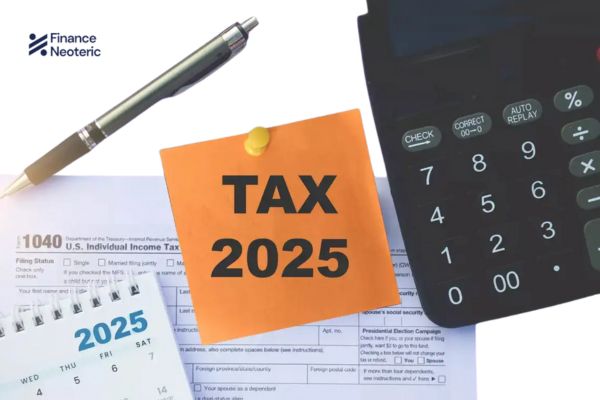How to File Income Tax Return (ITR) Online for AY 2025–26: A Complete Guide

Filing your income tax return (ITR) is one of the most important financial tasks every year. To make the process smoother for taxpayers, the Income Tax Department has extended the last date to file ITR for the Assessment Year (AY) 2025–26 to 15 September 2025. Earlier, the deadline for non-audit category taxpayers was 31 July 2025, which means you now have 45 extra days to complete your filing.
In this guide, we explain how to file your ITR online step by step, list the required documents, and answer commonly asked questions to help you stay tax-ready.
Why Should You File Your ITR?
If your annual income crosses the basic exemption limit under the Income Tax Act, 1961, filing an ITR is not optional. It is mandatory. Even if you are not liable to pay tax, filing a return can help you:
- Claim refunds
- Keep your financial records clean
- Get smoother approvals for loans and visas
Documents Needed to File ITR
- Before you begin, keep the following documents ready:
- Form 16 (issued by your employer)
- Form 26AS
- Annual Information Statement (AIS)
- Tax Information Statement (TIS)
- Bank statements
- Interest certificates (from bank or post office)
- Proof of investments and deductions under sections like 80C, 80D, etc.
Choosing the Right ITR Form
There are seven ITR forms available (ITR 1 to ITR 7). Most salaried individuals will use ITR 1 (Sahaj) or ITR 2, depending on their income sources. Choosing the correct form is essential to avoid errors.
Step-by-Step Guide to File ITR Online
Step 1: Log in to the Income Tax e-Filing Portal
- Visit the official e-filing portal
- Click on Login
- Enter your PAN as the User ID
- Enter your password and proceed
Step 2: Start Filing Your Return
- Go to e-File > Income Tax Returns > File Income Tax Return
Step 3: Choose the Assessment Year
- Select AY 2025–26
- Choose Online Mode
- Select filing type as Original or Revised Return
Step 4: Select Your Status
- Choose between Individual, HUF, or Others
- Most salaried people will select Individual
Step 5: Pick the Right ITR Form
- Based on your income, select ITR 1 or ITR 2
Step 6: Give a Reason for Filing
- Indicate why you are filing: income above exemption limit, etc.
Step 7: Review Pre-Filled Information
- Verify personal, income, deduction, and bank details
- Make changes where necessary
Step 8: Submit and E-Verify
- Submit your return
- E-verify within 30 days using Aadhaar OTP, net banking, or other available options
- Alternatively, you can send a signed ITR-V to CPC Bengaluru
Important Update for Salaried Employees
Even though you can file your return early, most salaried individuals wait until they receive Form 16 from their employer — usually issued by end of June or early July. Make sure to cross-check your Form 16 with Form 26AS and AIS before filing.
Final Tips for a Hassle-Free ITR Filing
- File your return well before the deadline to avoid last-minute rush
- Use pre-filled data but always double-check entries
- Keep a copy of your filed ITR and acknowledgement for future use
People Also Ask
1. When can we file ITR for 2025?
You can start filing your Income Tax Return (ITR) for Assessment Year 2025-26 after the forms are released and your documents like Form 16 are ready—usually by mid-June. If your accounts need an audit, the last date is 30 October 2025. If not, the extended deadline is now 15 September 2025. You can also file a belated return by 31 December 2025, but a late fee may apply.
2. What is the income tax update for 2025?
For FY 2024–25 (AY 2025–26), individuals with income up to Rs 50 lakh can use the simpler ITR-1 form. This includes salary, one house property, income from other sources like interest, and long-term capital gains under Section 112A up to Rs 1.25 lakh. The ITR forms have been updated to make the filing process easier and more transparent.
3. What is the new income tax regime deduction for 2025?
Under the new tax regime for FY 2025–26, these are the proposed income slabs:
- Up to Rs 4 lakh: No tax
- Rs 4 lakh to Rs 8 lakh: 5%
- Rs 8 lakh to Rs 12 lakh: 10%
- Rs 12 lakh to Rs 16 lakh: 15%
- Rs 16 lakh to Rs 20 lakh: 20%
- Rs 20 lakh to Rs 24 lakh: 25%
- Above Rs 24 lakh: 30%
This regime offers lower tax rates but limited deductions, so choose the one that suits your needs best.
4. What is the ITR filing date for salaried employees in 2025?
For salaried individuals who don’t fall under the audit category, the last date to file ITR for FY 2024–25 (AY 2025–26) is now 15 September 2025. Make sure to collect your Form 16 from your employer by the end of June or early July and file your return well before the deadline to avoid last-minute stress.
5. Can I file ITR without Form 16?
Yes, you can file ITR without Form 16 by using your salary slips, bank statements, Form 26AS, and AIS data to calculate your income and taxes.
6. Is it mandatory to file ITR if I have no tax liability?
If your income is below the exemption limit, filing is not mandatory. However, it is recommended for record-keeping, loan processing, and claiming refunds.
7. What happens if I miss the ITR deadline?
You can still file a belated return but may have to pay a late fee and lose certain benefits such as carry-forward of losses.
8. How long does it take to get a refund after filing ITR?
If everything is in order and e-verification is completed on time, refunds are usually processed within 7 to 45 days.
9. Do I need a CA to file my ITR?
Not necessarily. The e-filing portal is designed to be user-friendly. If your financials are simple, you can file on your own. For complex cases, consulting a CA is advisable.
Stay connected with FinanceNeoteric on WhatsApp Channel for expert coverage and in-depth financial stories.
Disclaimer: This post is for general informational purposes only. It does not constitute financial advice. Please consult a qualified professional before making financial decisions.







